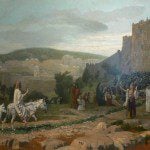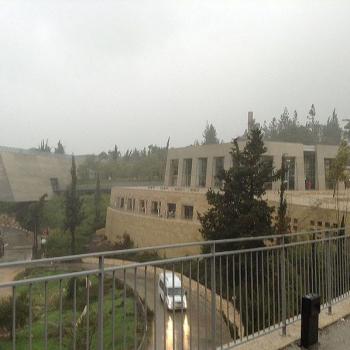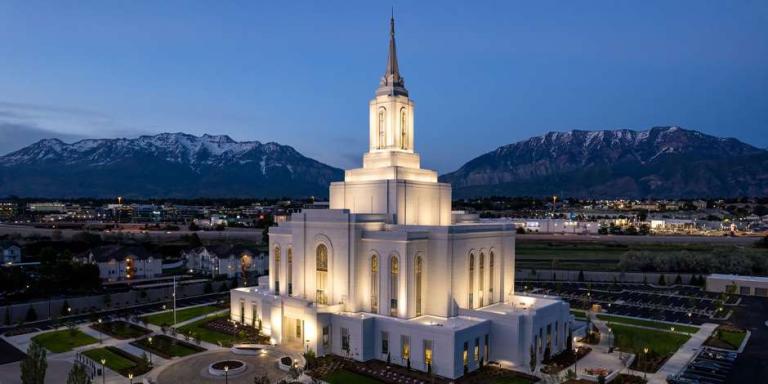
A passage in the stake president’s remarks at our stake conference this morning got me to thinking along the following lines, closely related to but not identical with the line of thought that he was pursuing:
I sometimes hear from former members of the Church of Jesus Christ of Latter-day Saints, and from grace-alone evangelical critics of the Church, that escape from Mormonism often delivers the escapee from the demoralizing sense that he is never good enough, that she always needs to change and to improve, etc., etc. There is, of course, evidently such a thing as “toxic perfectionism,” although it’s far from clear that the Church’s teachings or culture particularly foster that kind of thing. And, while some apparently do suffer from “toxic perfectionism” — Sister Tamara Runia’s memorable talk in General Conference a week ago was obviously designed, at least in part, to help such people — I must say that I myself have never found the encouragement to repent and to do better especially oppressive or debilitating.
That said, I’ve always been amazed at those who claim to want a faith that doesn’t ask them to repent, change, and improve. Heck, let’s leave religion and faith out of it: I can’t imagine life without a desire to improve. We can never do or be all that we want to do and to be, of course, but surely most normal people would like to exercise more regularly, be better parents, lose weight, master Spanish, play better piano, eat less junk food, take up painting, read more, make more regular entries in their journals, get better sleep, improve their golf swing, read the scriptures more faithfully, learn to dance, pray more mindfully, give more time to community service, earn a promotion, save more, and/or take better care of the yard.
A person completely and absolutely comfortable with his or her status quo would strike me, anyway, as very weird indeed. Indeed, as virtually comatose. Nor can I really imagine a God who wouldn’t want us to learn and to improve. And this has implications for our theology, for our doctrine of both God and humanity, for our understanding of human destiny.
Would you approve of a parent who, judging that a toddler was unspeakably cute — which, of course, toddlers very commonly are — decided that the toddler should remain a toddler? Would you agree, if such things were possible, if the parent were to take measures to ensure that the child remain wobbly on its feet, illiterate, immature, inarticulate, and dependent? Or again, were such a thing conceivable, if the parent had, say, undertaken genetic modifications to prevent a newborn from ever maturing beyond toddlerhood? Even if there is unavoidable sadness in it, isn’t the goal of normal, responsible parents to help their children to grow to maturity and independence? But how could that possibly happen without learning, repentance, and improvement? How could it ever be possible without change?
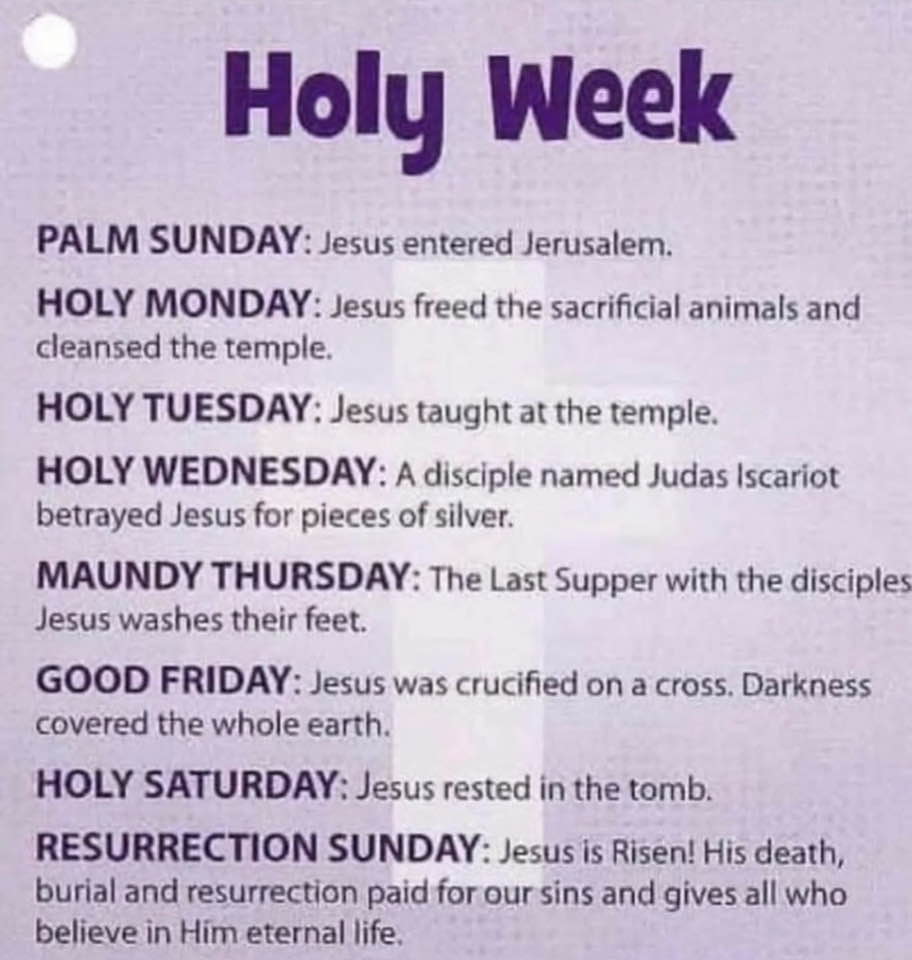
Here are some resources that you might find helpful for today and for this week leading up to Resurrection Sunday, Easter:
Officially from the Church of Jesus Christ of Latter-day Saints: “Experience Jesus Christ’s Greater Love For You. Experience Holy Week.”
From the Church News: “Archeological insights and modern witnesses of Easter: Ancient findings and a living Prophet and Apostles help deepen understanding, says Richard Neitzel Holzapfel”
“The Mesa Easter Pageant Celebrates the ‘Greater Love’ of Jesus Christ”
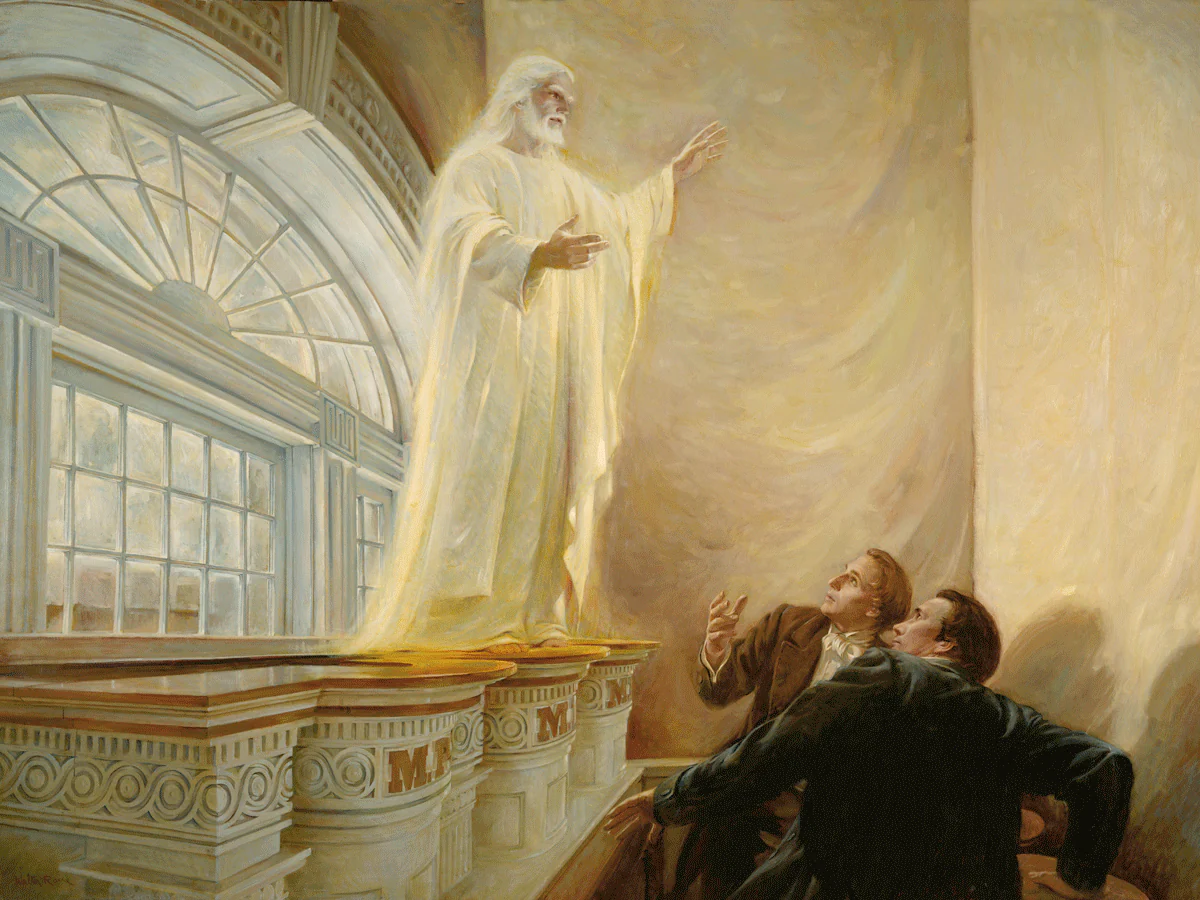
Richard Winmill shared the quotation below on Facebook, and I’m reproducing it here. (I hope he’s okay with that.) With my wife and others, I was in the Kirtland Temple on Thursday afternoon and, while we were in the lower assembly hall, our guide, Elder Rory Scanlon, mentioned the significant fact that the temple’s dedication took place on Palm Sunday, 1836. Also, while we were there we sang “The Spirit of God like a Fire Is Burning,” as they did at the dedication of that first temple and as has been done at every temple dedication since — and as, I’m sure, was done at the dedication in Auckland earlier today. The chorus of that great hymn reads as follows: “We’ll sing and we’ll shout with the armies of heaven, ‘Hosanna, hosanna to God and the Lamb! Let glory to them in the highest be given, Henceforth and forever, Amen and amen!'” Here now is the quotation that Brother Winmill shared:“A Latter-day Saint reading of the triumphal entry on Palm Sunday lays out yet another level of significance between Jesus’s last week two millennia ago and his future Second Coming. The dedication of the Kirtland Temple on March 27, 1836, occurred on Palm Sunday that year, and the appearance of the glorified, risen Lord to Joseph Smith and Oliver Cowdery (Doctrine and Covenants 110: 1–10) occurred on April 3, which was Easter Sunday. This timing has led Robert Rees to observe the following: That entire week, in fact, seems to have been a holy week, for on Sunday, March 27, Joseph dedicated the temple and, at the conclusion of his dedicatory prayer, the congregation sang “The Spirit of God like a Fire Is Burning” and then partook of the sacrament. Joseph recorded, “We sealed the proceeding of the day by shouting hosanna to God and the Lamb 3 times sealing it each time with Amen, Amen, and Amen.” Although Joseph does not so indicate, this is the shout given by those who welcomed Jesus into Jerusalem on the first Palm Sunday.”
— Greater Love Hath No Man: A Latter-day Saint Guide to Celebrating the Easter Season, by Eric D. Huntsman and Trevan G. Hatch

We had our regular quarterly Interpreter Foundation board meeting on Saturday morning. It’s difficult to put these together, because the members of our board are somewhat scattered — two of them almost invariably attend virtually, from Hawai’i and from Wisconsin; two others typically drive in from Idaho and from Wyoming — and because we all have rather full and complicated calendars. There are some really important and somewhat urgent issues (both opportunities and challenges) facing the Foundation at the moment and, for that reason and for the reasons already mentioned, it wasn’t feasible to postpone the meeting. And, since I’m the president of the dang thing, I couldn’t very well skip it. Which saddened me, because I would like to have been supportive of our friend Don Bradley at his son’s funeral. I think that I wasn’t the only one of us who would have attended had it been possible; he and his unspeakably tragic loss were explicitly mentioned during our meeting.
A very different matter: On Saturday night, my wife and I caught a Brigham Young University student performance of Anton Chekhov’s The Cherry Orchard. The BYU theater program’s several-year stint in the former Provo High School has turned out better than I expected, but we’ll be glad — and I’m sure that the theater faculty and their students will be really pleased — when performances move into the new BYU theater building. Had I been a theater major, as my wife in fact was, I would not have relished the possibility that I might conceivably spend my entire undergraduate career in a modified high school building. My wife was melancholy about seeing the Harris Fine Arts Center demolished — she had spent untold hours in it, even before her freshman year of college (having come over more than once from Denver for extended summer theater programs on campus) — but we’re excited to begin to enjoy the new building. It’s scheduled for completion later this year, though I have no idea whether or not it will be ready for fall semester.
Of course, since it’s being constructed for theists and to be used by theists, the new building will inevitably serve to fatten the Christopher Hitchens Memorial “How Religion Poisons Everything” File™. There’s no escaping that. The building and every performance in it will be rendered toxic by the baneful influence of its theistic owners and users. Consider, as a rough parallel, how religion destroyed BYU’s athletic programs this past year. (Here’s another recent story that will serve to illustrate that same theme: “BREAKING: BYU football Head Coach Kalani Sitake Makes History with Major Wins at NCAA Coaches’ Conference, Taking Home Awards for ‘Coaching Staff of the Year,’ ‘Innovative Offense,’ and ‘Outstanding Recruiting Efforts…full details…”)


